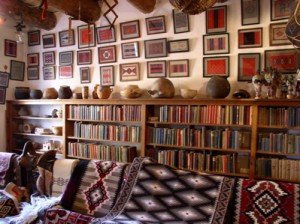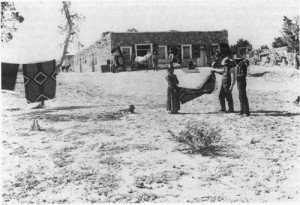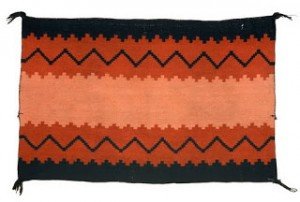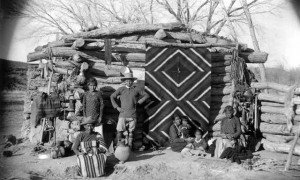One of those sought after Native American products are the beautiful Navajo Rugs. There’s quite a bit of history involved as to when and how the Navajo began making these very distinctive products.
Thank you for reading this post, don't forget to subscribe!
History of Navajo Weaving
Historians believe that the Navajo may have learned to weave from the Pueblo Indians when the Navajo moved into the Four Corners region of Arizona and New Mexico between the era of the 1300’s to the 1500’s.
Some others believe that the Navajo’s were not involved in weaving to perhaps the 1700’s. This would have been after the Spaniards entered the region. At first the Navajo’s employed cotton for their weaving products but it seems that they converted over to wool after the Spaniards arrived.
There’s some interesting history that might explain how the Navajo’s learned the craft from the nearby pueblo peoples. While historians can document that the two different tribes did not exactly get along because of Navajo raids into pueblo territory, it appears that the two tribes did indeed forge some type of friendship after the Conquistadors entered the picture.
The pueblo Indians were put into a kind of forced servitude during the first Spanish occupation of Nuevo Mexico which resulted in the bloody Pueblo Revolt of 1680. It was during and after this revolt that many pueblo Indians fled westward to the land of the Navajo. The Pueblo Revolt expelled the Spaniards from Nuevo Mexico for twelve years.

The earliest pieces of Navajo weaving which can be dated and that still exist today come to us from Massacre Cave in Canon del Muerto.
Pieces of Navajo weaving dating to the years 1804-05 when the punitive slaughter took place in the Canon, were found circa 1900. These pieces contain a plain stripe pattern in the blanket’s design. This is considered a Navajo adaptation of the Pueblo teacher’s style of design.
Navajo Blankets and Rugs and the Santa Fe Trail
Commerce increased for the Navajo and the selling of Navajo blankets and Navajo rugs after the opening of the Santa Fe Trail in 1822. The trail established a busy commerce link between New Mexico which was then ruled by Mexico and the growing United States. Prior to that time the Spaniards were known to discourage trade with the U.S. The establishing of trade over the Santa Fe Trail was the single largest event that introduced their weaving products to the east.
The first Navajo products on the market were blankets rather than rugs. The change to rugs occurred circa 1880.
Today, there is a large market for the Navajo rugs and Navajo blankets and many Navajo’s are involved in it’s commercialization. These genuine Navajo rug products today might sell for around $800 depending on size and for many Navajo’s this business represents their sole income. The only real obstacle for their rug industry are the many foreign imitations that are found in many shops.
It’s important to know what you’re buying and while there are certainly many top-notch dealers of genuine Navajo rugs in the Santa Fe and surrounding area, one excellent auction venue in particular, the Crownpoint Auction, will allow you to buy the real thing directly on the Navajo reservation.

Driving the Los Caminos Antiguos Scenic Highway
The Cliff House of Manitou Springs
Explore Western Art in San Antonio Texas
Barrio de Analco and America’s Oldest House
The Crownpoint Auctions

The auction itself is held at the Crownpoint Elementary School in the small town of Crownpoint. The town is located about 25 miles north of Thoreau New Mexico on NM 371. The Thoreau exit on Interstate-40 is #53.
